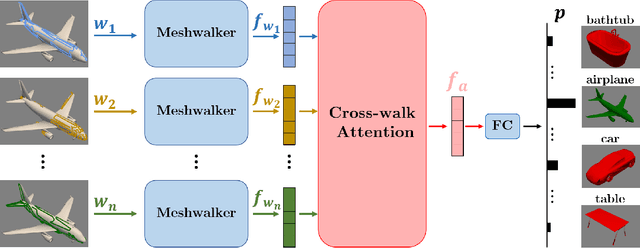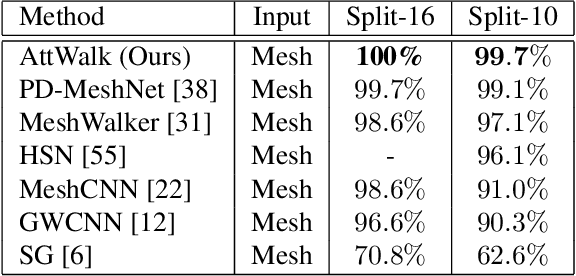AttWalk: Attentive Cross-Walks for Deep Mesh Analysis
Paper and Code
Apr 23, 2021



Mesh representation by random walks has been shown to benefit deep learning. Randomness is indeed a powerful concept. However, it comes with a price: some walks might wander around non-characteristic regions of the mesh, which might be harmful to shape analysis, especially when only a few walks are utilized. We propose a novel walk-attention mechanism that leverages the fact that multiple walks are used. The key idea is that the walks may provide each other with information regarding the meaningful (attentive) features of the mesh. We utilize this mutual information to extract a single descriptor of the mesh. This differs from common attention mechanisms that use attention to improve the representation of each individual descriptor. Our approach achieves SOTA results for two basic 3D shape analysis tasks: classification and retrieval. Even a handful of walks along a mesh suffice for learning.
 Add to Chrome
Add to Chrome Add to Firefox
Add to Firefox Add to Edge
Add to Edge